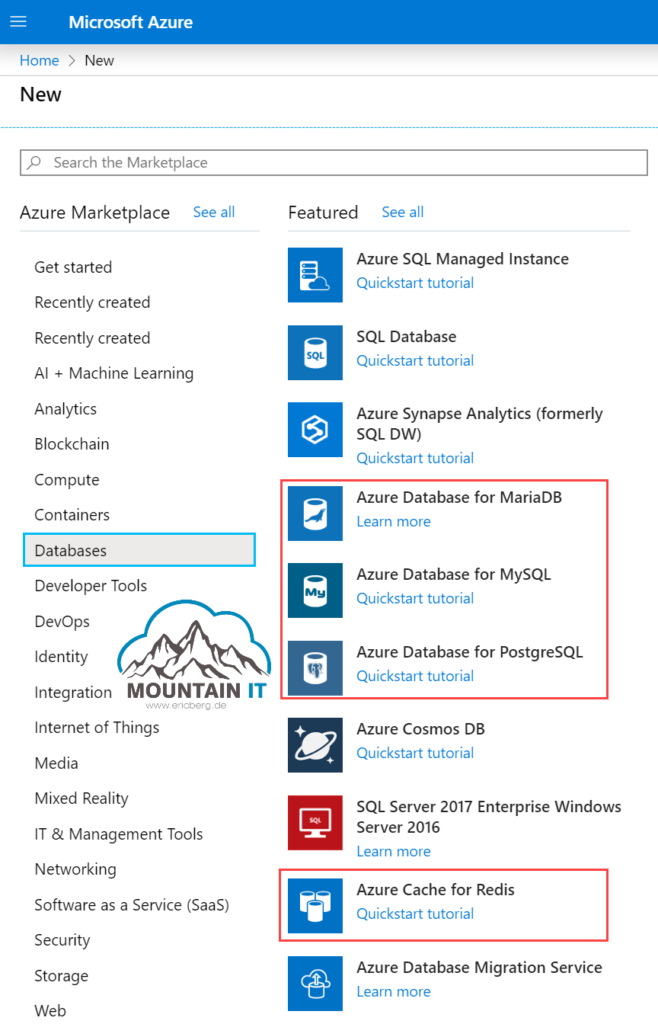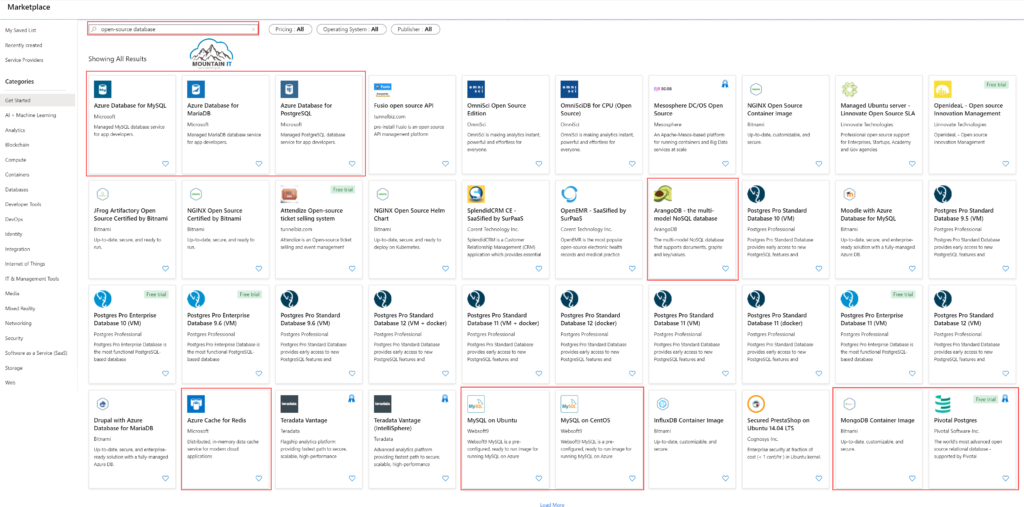[NEWS] Azure News of the week
5. Juli 2024Also this week there were many news around Microsoft Azure! Here as always the overview for you: Have fun reading and trying it out…
Microsoft loves Open Source … but not only Open Source Operating Systems … so we can also find a bunch of Open Source Database Offerings in Microsoft Azure.
The most important ones are directly covered by Microsoft as „Azure Database“ Services for:

Those databases are around in Azure for quite a while. For example, have a look at a post from 2018 where Microsoft announced the MariaDB preview and updates to MySQL and PostgreSQL.
Let’s have a look into those services.
One of the most popular open source database systems is MySQL. it is available everywhere. If you have a contract with a hoster, you go to any cloud platform or you play around in your own world… MySQL is around.
In Azure you have two options to run MySQL. You could either spin up a VM and install you DB in there, or you use the Azure Database PaaS Service.
The Service comes with:
Right now MySQL in Azure is available in Version 5.6, 5.7 or 8.0.
The pricing is aligned on the vCore model and also supports the purchase of Azure Reservations. It comes in a basic, general purpose and high memory performance class.
Based on the selected performance tier and instance size there are some limitations that apply. For example there is a limit for the max ammount of connections that are allowed. Starting at 50 with a basic 1vCore tier … going up to 20.000 in a general purpose 64 vCore tier.
Also there are some technical limitations that are listed in the Microsoft Docs.
Another well known open source database systems is PostgreSQL. It is also available in most cloud providers and we see a lot of implementations in on-prem scenarios as well.
In Azure you have two options to run PostgreSQL. You could either spin up a VM and install you DB in there, or you use the Azure Database PaaS Service.
The Service comes with:
Right now PostgreSQL in Azure is available in Version 9.5, 9.6. 10 or 11
The pricing is aligned on the vCore model and also supports the purchase of Azure Reservations. It comes in a basic, general purpose and high memory performance class.
Based on the selected performance tier and instance size there are some limitations that apply. For example there is a limit for the max ammount of connections that are allowed. Starting at 55 with a basic 1vCore tier … going up to 1.900 in a general purpose 64 vCore tier.
Also there are some technical limitations that are listed in the Microsoft Docs.
The youngest member in the open source database systems on Azure is MariaDB.
In Azure you have two options to run MariaDB. You could either spin up a VM and install you DB in there, or you use the Azure Database PaaS Service.
The Service comes with:
Right now MariaDB in Azure is available in Version 10.2 and 10.3.
The pricing is aligned on the vCore model and also supports the purchase of Azure Reservations. It comes in a basic, general purpose and high memory performance class.
Based on the selected performance tier and instance size there are some limitations that apply. For example there is a limit for the max ammount of connections that are allowed. Starting at 50 with a basic 1vCore tier … going up to 20.000 in a general purpose 64 vCore tier.
Also there are some technical limitations that are listed in the Microsoft Docs.
One important known issue I would like to share with you:
MariaDB server instance displays the incorrect server version after connection is established. To get the correct server instance engine version, use the
select version();command.
Redis will get its own article later in this series. So for now, let’s just have a look into the description:
Azure Cache for Redis is based on the popular software Redis. It is typically used as a cache to improve the performance and scalability of systems that rely heavily on backend data-stores. Performance is improved by temporarily copying frequently accessed data to fast storage located close to the application. With Azure Cache for Redis, this fast storage is located in-memory with Azure Cache for Redis instead of being loaded from disk by a database.
Besides the official Microsoft offers for open source databases, there are plenty of services in the Azure Marketplace. For example you can find:

So, happy DBing 🙂
Leave a comment